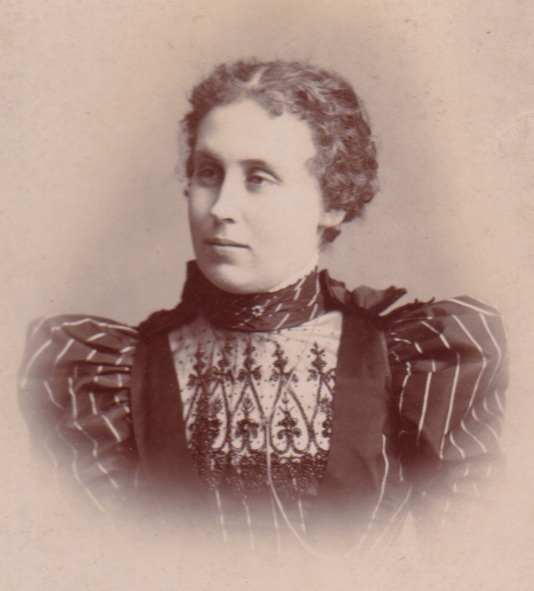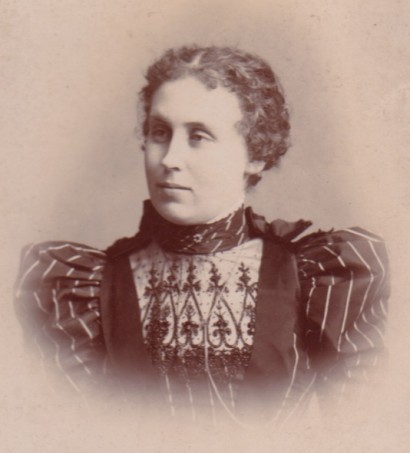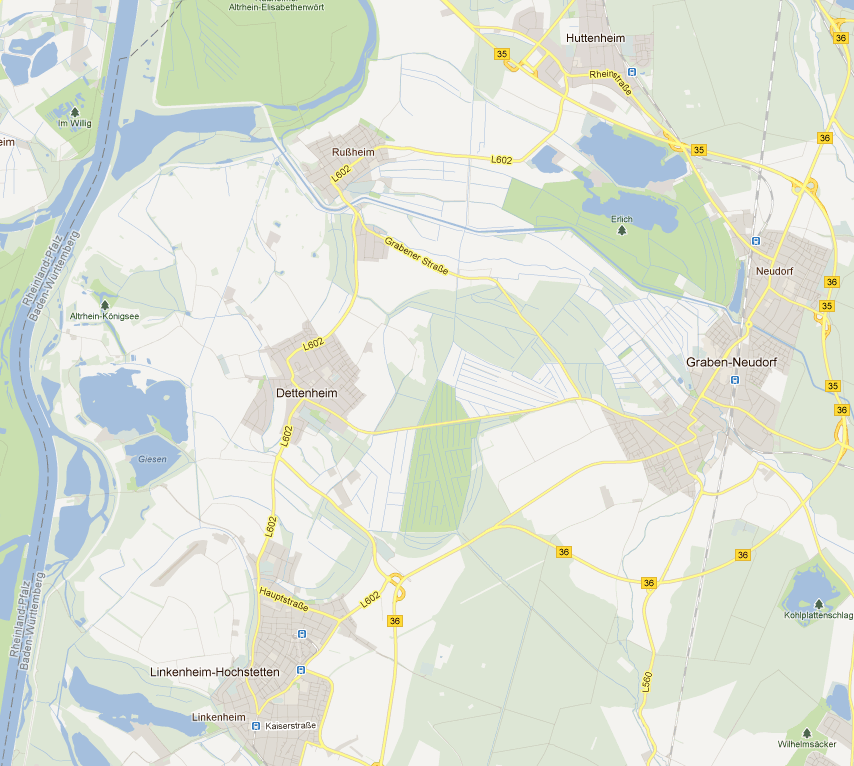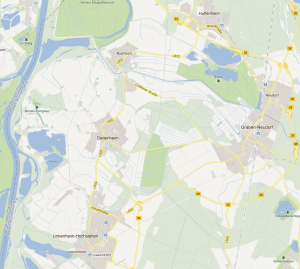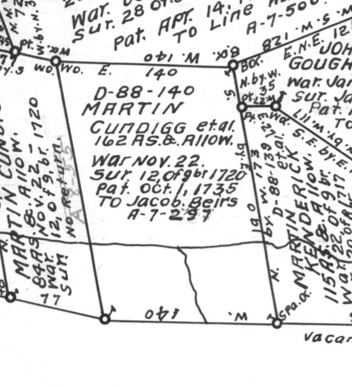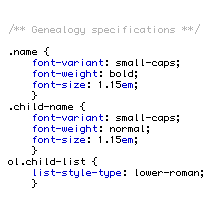I was recently contacted by a reader who found one of my posts on Christian Hoover of Heidelberg Township, York County, Pennsylvania. She thought the information was interesting, but didn’t see how it was pertinent because it directly conflicted information she believed to be true. I followed up with a series of questions to learn more about her connection to Christian Hoover.
The reader had information on Christian and Maria (Lehman) Hoover of York County. Christian, born 1807, was supposedly the son of Christian and Nancy (Plowman?) Hoover of Mifflin County. The father Christian was born ca 1770 and died 18 Aug 1855.
In reading the information she provided, I was convinced we had a case of mistaken identities. It’s a very common mistake, one so easy to fall victim to everyone does it a some point during their research. Same name, same area, same person, right? Not necessarily.
The first rule of genealogy is to start with what you know and work backwards. The earliest documented evidence this reader had was the connection between Christian and Maria (Lehman) Hoover and several of their children. The death certificate of Christian Augustus Hoover, born 16 Aug 1847 and died 29 Dec 1918, names them as his parents. Birth and baptism records of several other children confirm their identities.
Christian and Maria (Lehman) Hoover are buried in Hoover’s Cemetery, Starview, East Manchester Township, York County, Pennsylvania. Christian was born 29 Mar 1807 and died 22 May 1883. Maria (Lehman) Hoover was born 1 Jun 1803 and died 19 Jan 1883.
York County federal census records for 1840 through 1880 show that Christian Hoover and his wife Mary lived in Manchester or Conewago townships throughout his adult life:
- 1880: Hoover, Christian, age 73, Retired farmer; Mary, age 77
- 1870: Hoover, Christian, age 63, Farmer; Mary, age 67
- 1860: Christian Hoover, age 53, Farmer; Mary, age 56
- 1850: Christian Hoover, age 44, Farmer; Mary, age 48
- 1840: Christian Hoover, age 30-40
No record with Christian Hoover listed as head of household was found in the 1830 census. Given the age of his children in the 1840 census, Christian likely married sometime after 1830, so may have been living at home at the time of the 1830 census. He would have been 23, enumerated within the 20-30 age bracket.
Given that Christian lived in York County all his adult life, it’s quite likely that he was raised there, as well. There are several households with male members of an age to be Christian Hoover in the 1810 through 1830 census records for Manchester Township.,, The only head of household there for all three years is Philip Hoover. Does this prove that Philip is Christian’s father? No, but it gives us a direction for further research.
In 1850, Christian Hoover owned $300 of real estate. In 1860, he owned $1100 in real estate and had $600 in his personal estate. Given the sharp rise in his net worth, it’s quite possible that he inherited some of it through the death of a relative—a father, for instance.
Philip Hoover died 23 May 1854. He left a will, dated 13 Aug 1852, in which he names the following children: Henry, John, Molly (wife of Henry Hartman), Jacob, Daniel, Andrew, Felix, Christian, Susanna (deceased, wife of Daniel Koch), and Elizabeth (deceased, wife of John Sniderman).
A search of York County church records reveals the following baptisms for children of Philip and Susanna Huber:
- Daniel Huber, b. 15 Oct 1798, bapt. 9 Nov 1798, Trinity Reformed Church, York
- Andrew Huber, b. 22 Nov 1800, bapt. 17 May 1801, Christ Evangelical Lutheran Church, York
- Susanna Huber, b. 17 Mar 1805, bapt. 21 Apr 1805, Trinity Reformed Church, York
They were also sponsors for:
- Peter, son of Peter Huber & Margaretha, bapt. 27 Dec 1798
- Philip, son of Henry Huber & Catharina, bapt. 29 Aug 1810
- Sarah, daughter of John Schneidman & Elizabeth, bapt. 21 May 1813
- Elizabeth, daughter of John Schneidman & Elizabeth, bapt. 26 Jun 1815
- Susanna, daughter of John Schneidman & Elizabeth, bapt. 5 Feb 1815
- Daniel Philip, son of John Huber & Juliana, bapt. 24 May 1825
Christian was allegedly baptized at Christ [Evangelical?] Lutheran Church in York on 9 Jun 1807. This date was outside the records available to me, so I couldn’t easily verify it. However, it is consistent with those of Philip and Susanna (___) Huber’s family members.
The 1825 record is the last one I found with mention of Philip and Susanna Huber for Trinity or Christ Evangelical churches. On 29 Feb 1822, Philip and Peter Hoover deeded some of their land to the Lutheran and Reformed congregations. This church was called “Christ’s Church,” aka Huber’s [Hoover’s] Church. Family members are buried in the associated cemetery—as are Christian and Maria (Lehman) Hoover, so it is likely Hoover births, marriages and deaths were recorded in the church’s records.
After Philip’s death there were three deeds recorded as releases from his heirs to his executors, sons Daniel and Andrew Huber: one from Jacob Huber of Crawford County, Indiana; a second from Henry Hoover, John Hoover, Henry Hartman, Christian Hoover and Nancy Koch, all of York County; and the last from Felix Hoover.
Philip Hoover’s will gives his property to his sons Daniel and Andrew and calls for them to pay the heirs $200—one heir/year in sequence—until the value of the property has been paid off. However, Henry Hoover, John Hoover, Henry Hartman, Felix Hoover, Christian Hoover and Nancy Koch contested the terms of the will. A compromise was reached and Daniel and Andrew Hoover agreed to pay them $700 each before 1 Apr 1856. This partially explains the jump in value of Christian Hoover’s estate between 1850 and 1860.
Christian and Nancy (___) Hoover
But what about the other Christian Hoover? Couldn’t Christian and Nancy have been the parents of Christian (b. 1807)?
Christian Hoover died 18 Aug 1855 at the age of 88 years, 3 months, and 16 days. Using his age at death, his calculated birth date is 2 May 1766. Christian’s wife Nancy died 5 Feb 1855 at the age of 80 years. She was born circa 1775. They are buried in the Little Valley Presbyterian Church Cemetery, Vira, Pennsylvania.
Their family lived in Derry Township, Mifflin County, Pennsylvania consistently from 1810 through 1850. They had sons aged <5 in 1810, <10 and 10-15 in 1820, and 15-20 and 20-30 in 1830.,, This is consistent with having a son born in 1807.
In 1840, there are two Christian Hoovers living in Derry Township—one aged 60-70 and another aged 30-40. They are both enumerated in Derry Township again in 1850. The first household is that of “Christian Hoover Jr.,” age 45, and his wife Margaret, age 41. The second is that of Christian Hoover, age 79, and his wife Nancy, age 76.
Christian C. Hoover died 8 Aug 1873 at the age of 67 years, 7 months and 12 days and was buried in the Little Valley Presbyterian Church Cemetery, Vira, Pennsylvania. Using his age at death, his calculated birth date is 27 Dec 1805. A gravestone for Margaret, wife of C.C. Hoover can also be found in this cemetery. She died 19 Aug 1891, aged 82 years, 1 month, and 6 days. Her calculated birth date is 13 Jul 1809.
This Christian is a match for a son of Christian and Nancy (___) Hoover, as seen in the census records. Is it definitive proof? No, but the evidence is certainly pointing in that direction.
Conclusions
Based on this research, I would say that the Christian Hoover, who married Maria Lehman, was most likely a son of Philip and Susanna (___) Hoover. Maria did not sign the deed of release in 1856, nor did I find any deeds from Philip to Christian. So, I don’t have a direct connection from Philip to Christian and Maria (Lehman) Hoover, but the circumstantial evidence is certainly suggestive.
Going forward I would look for the baptismal records for Christian and all of his children. His parents should be named in his record. If that cannot be found, since Philip and Susanna were sponsors for several other grandchildren, it’s possible that they were sponsors for one/some of Christian’s children, too. If not Philip and Susanna, perhaps one of Christian’s siblings will be named as a sponsor.
Is there a connection to Christian Hoover of Heidelberg? It’s not likely. Philip Hoover’s family resided in eastern York County from the time Philip arrived from Northampton County circa 1796-1798. Heidelberg is in the western part of the county and Christian received land there as early as 1749. Records show him there consistently from that time through his death in 1771. And of course, based on his estate records, we know that he did not have any children.

